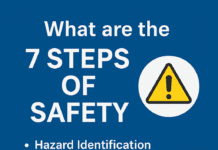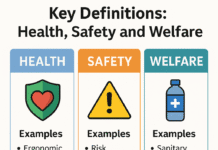
Occupational Health and Safety (OHS) Compliance: Protecting Your Workplace
Introduction
Occupational Health and Safety (OHS) compliance is a critical aspect of any workplace. Ensuring that your business adheres to OHS regulations is not just a legal requirement but also a moral obligation to protect your employees from harm. This article will guide you through the essential aspects of OHS compliance, its significance, regulations, and how to create a safer work environment for everyone.
Understanding OHS Compliance
OHS compliance refers to the adherence to laws, rules, and standards designed to protect the health and safety of employees in the workplace. These regulations aim to prevent accidents, injuries, and illnesses related to work activities. Compliance involves identifying workplace hazards, implementing control measures, and providing adequate training.
Importance of OHS Compliance
Safe Work Environment
Ensuring OHS compliance creates a safe work environment where employees can perform their tasks without fear of harm.
Legal Obligation
Failure to comply with OHS regulations can lead to legal consequences, including fines and penalties.
Reputation
Maintaining a reputation for a safe workplace can attract and retain top talent and clients.
Reduced Costs
OHS compliance can lead to reduced insurance costs and fewer workers’ compensation claims.
Key OHS Regulations
Federal Regulations
In the United States, federal agencies like OSHA (Occupational Safety and Health Administration) establish and enforce OHS regulations at the federal level. These regulations cover various industries and workplaces.
State Regulations
In addition to federal regulations, each state may have its own OHS laws and agencies responsible for enforcement. It’s essential to be aware of both federal and state requirements.
The Role of Employers
Employers play a pivotal role in OHS compliance. They are responsible for providing a safe workplace, identifying hazards, and ensuring that employees receive proper training.
Employee Responsibilities
Employees also have a role in OHS compliance. They must follow safety protocols, report hazards, and use protective equipment as required.
Creating a Safety Culture
Fostering a safety culture within the organization is crucial. Encourage employees to prioritize safety, and reward safe behavior.
Benefits of OHS Compliance
Improved Productivity
A safe workplace leads to higher productivity as employees can focus on their tasks without worrying about safety.
Employee Well-being
Compliance protects the physical and mental well-being of employees, reducing absenteeism due to injuries.
Legal Protection
Adhering to OHS regulations offers legal protection in case of accidents or injuries.
Common Workplace Hazards
Workplaces can harbor various hazards, including chemicals, machinery, ergonomic issues, and environmental factors. Identifying and mitigating these hazards is essential.
OHS Compliance Implementation
Implementing OHS compliance involves risk assessments, safety plans, and continuous monitoring and improvement.
Training and Education
Provide comprehensive training to employees, ensuring they are aware of safety protocols and can respond effectively in emergencies.
OHS Inspections
Regular inspections help identify potential issues and ensure compliance with regulations.
Reporting Incidents
Employees should be encouraged to report incidents promptly. Investigate incidents to prevent their recurrence.
Conclusion
Occupational Health and Safety (OHS) compliance is not just a legal requirement; it’s a commitment to the well-being of your employees. By prioritizing safety, following regulations, and creating a culture of OHS compliance, you can protect your workforce and reap the benefits of a safe workplace.
Emergency Response and Crisis Management
Process Safety Management (PSM)
FAQs
- What are the consequences of not complying with OHS regulations?
- Non-compliance can lead to fines, legal issues, and a compromised reputation.
- How can I identify workplace hazards?
- Conduct regular risk assessments and involve employees in hazard identification.
- Are OHS regulations the same across all states?
- No, each state may have its own OHS regulations in addition to federal ones.
- What is the role of OSHA in OHS compliance?
- OSHA sets and enforces federal OHS regulations in the United States.
- Can OHS compliance really reduce costs for my business?
- Yes, by preventing accidents and injuries, you can reduce insurance costs and workers’ compensation claims.
Remember, ensuring OHS compliance is not just about following rules; it’s about protecting the lives and well-being of those who contribute to the success of your business.
























